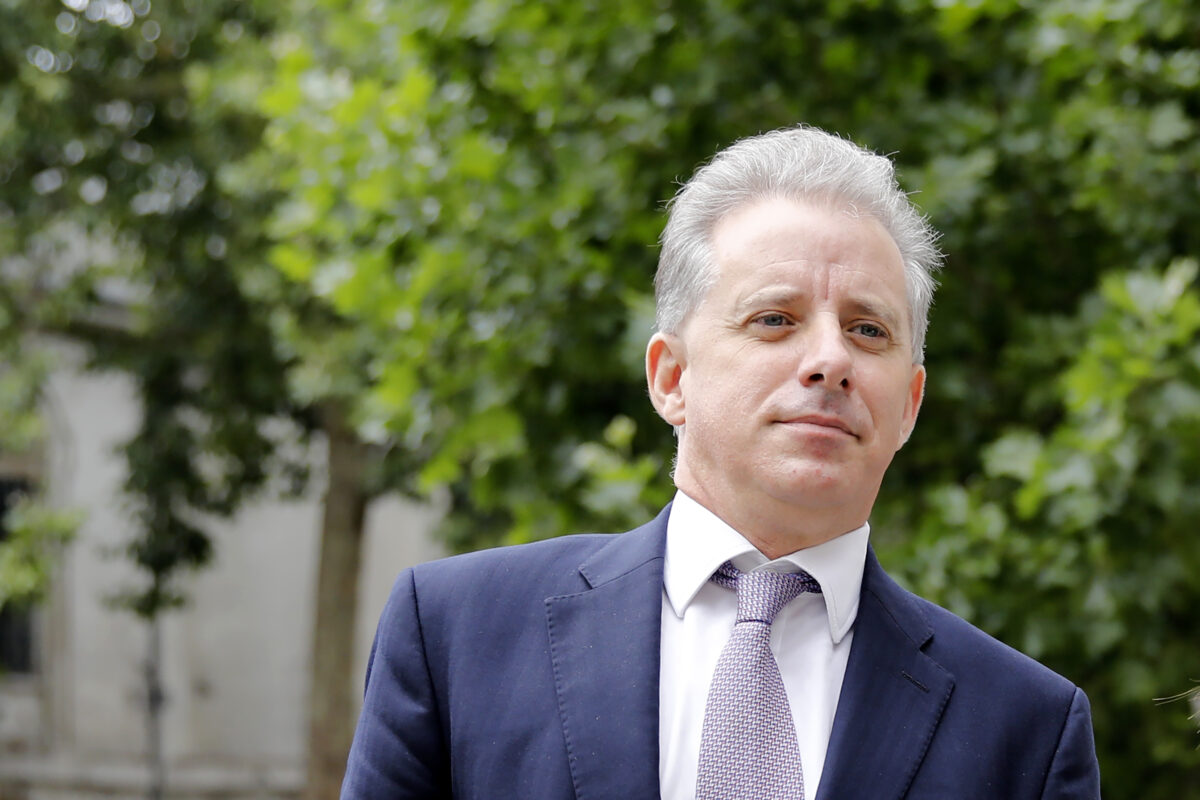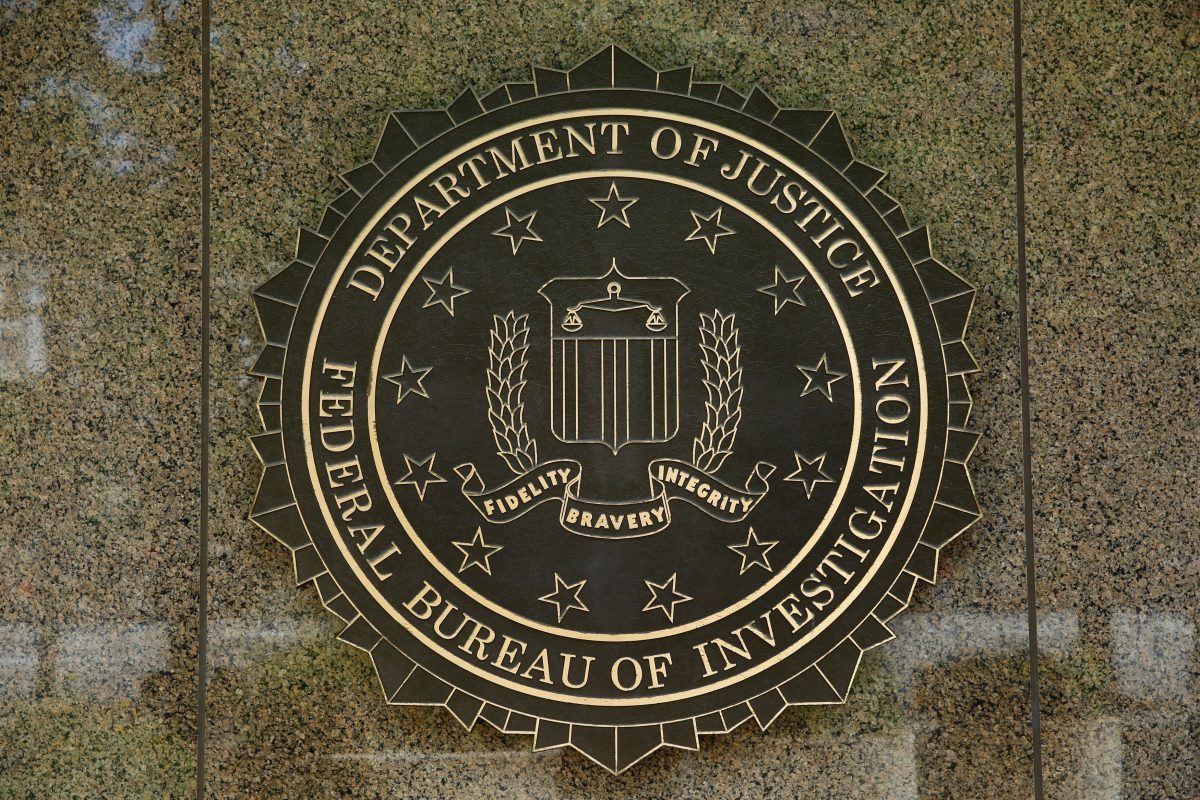A steady drip of information continues to reveal that the Federal Bureau of Investigation played a much larger—perhaps central—role before and during the Capitol protest than initially believed. And unanswered questions as to why certain co-conspirators or alleged instigators have not yet been charged while others who played a far lesser role face serious charges are fueling mounting suspicions that January 6 was an inside job rather than an “insurrection” incited by President Donald Trump.
After months of speculation about the use of FBI assets, first raised by Darren Beattie at Revolver News, the New York Times confirmed in September that at least two informants embedded with the Proud Boys were in close contact with their FBI handlers that day.
“In a detailed account of his activities contained in the records, the informant, who was part of a group chat of other Proud Boys, described meeting up with scores of men from chapters around the country at 10 a.m. on Jan. 6 at the Washington Monument and eventually marching to the Capitol,” reporter Alan Feuer wrote, adding, “the F.B.I. also had an additional informant with ties to another Proud Boys chapter that took part in the sacking of the Capitol.”
A new investigative series published by the Washington Post disclosed at least one FBI informant was working with a separate so-called “militia group,” the Three Percenters. “A confidential informant voluntarily sent his FBI contact dozens of exchanges the next day between self-described members of the Three Percenters,” the Post reported last week, referring to a text exchange on a December 20 group chat. The Post also described the activities of “a bureau informant in the Midwest” who was tracking chatter among “militias” planning to travel to Washington for the January 6 rally and protest.
Verification that FBI assets infiltrated the Three Percenters before January 6 not only bolsters claims that the agency was more deeply involved than the public believes—and that officials such as FBI Director Christopher Wray have suggested—but provides another connection to the FBI-concocted plot to “kidnap” Michigan Governor Gretchen Whitmer in 2020: a longtime FBI informant and convicted felon who aided the scheme by organizing and paying for events related to the hoax also was a frontman for the Wisconsin chapter of the Three Percenters.
In fact, the “militias” Wray still insists pose a dire threat to national security have been under government surveillance for almost two years.
Wray launched Operation Cold Snap in spring 2020, ostensibly to foil violent anti-lockdown rallies in capital cities across the country. “[The] FBI began an investigation earlier this year after becoming aware through social media that a group of individuals was discussing the violent overthrow of certain government and law enforcement components,” the Justice Department said in an October 2020 press release.
It’s increasingly apparent, however, that Operation Cold Snap was less a safety mission and more like human fly paper.
BuzzFeed’s investigative report into the Whitmer case, which exposed the use of at least 13 FBI undercover agents and informants, described Operation Cold Snap as a “far-reaching, multi-state domestic terrorism investigation” into alleged militia groups; the 13 non-FBI perpetrators of the Whitmer kidnapping scheme were ensnared, or entrapped as their lawyers argue, under the ruse of Operation Cold Snap.
Given the nature of the fabricated Whitmer caper, which required the extensive use of multiple FBI assets, and media reports that FBI informants infiltrated at least two “militia” groups in advance of January 6, one can now safely assume the nation’s top law enforcement agency accelerated Operation Cold Snap throughout 2020. One Proud Boys informant on the ground on January 6, the Times reported, started working with the FBI in July 2020.
Further, defendants now are in the process of receiving long-delayed discovery from the Justice Department that will gradually reveal the full extent of the FBI’s involvement in several January 6 cases. In a filing last month for Glenn Croy, a Trump supporter from Colorado who pleaded guilty to one misdemeanor, Croy’s defense attorney informed the court that recent discovery disclosures confirmed “FBI agents were in the crowd” at the Capitol that day.
This information directly contradicts Chris Wray’s “gee shucks, if we only knew” Senate testimony earlier this year, in which he disingenuously bemoaned the fact his agency didn’t know enough to thwart the events of January 6.
“You can be darn tootin’ that we are focused very, very hard on how can we get better sources, better information, better analysis so we can make sure that something like what happened on January 6 never happens again,” Wray assured Senator Amy Klobuchar (D-Minn.) during a hearing on March 2.
So, let’s get this straight: Multiple FBI informants infiltrated militia groups for months and worked directly with FBI handlers in numerous cities and who-knows-how-many FBI agents were mixed in the crowd on January 6, but Wray still couldn’t stop a bunch of unarmed retired military LARPers, organic furries, and Midwestern meemaws from taking selfies in the Rotunda?
Color me skeptical.
Speaking of color, what about the dozens of alleged Proud Boy associates who wore bright orange knit caps on January 6? While the message went out from the top that Proud Boys would dress incognito during the Capitol protest, eschewing the group’s yellow insignia for all black to throw off Antifa, several Proud Boys inexplicably chose to wear orange neon hats.
A video montage of the day produced by the New York Times shows a crowd of neon-hatted protesters reportedly aligned with the Proud Boys walking with the group’s leaders, Joseph Biggs and Ethan Nordean, from the Washington Monument to Capitol Hill, the same group the Times identified as including at least one informant. “Many are marked with orange tape or hats,” the Times’ narrator explained.
Other video shows neon-hatted Proud Boys storming past the first police barrier on the west side of the Capitol—a breach led by Ryan Samsel after a brief conversation with Ray Epps, another unindicted January 6 instigator suspected of government ties—and getting close to the building, a restricted area for which others have been cited for trespassing.
Archived footage show these neon-hatted demonstrators bolting up a set of stairs again past police near the inauguration platform.
But while Biggs, Nordean, and two other Proud Boys have been incarcerated since last spring, denied bail despite having no criminal record and being charged with only nonviolent offenses, none of the neon-hatted “Proud Boys” has been arrested or charged. Of the nearly 1,500 photos posted on the FBIs most wanted list for January 6, not one suspect is wearing an orange neon cap.
Evidence in two separate multi-defendant indictments against other Proud Boys members does not indicate that any wore these distinctive neon hats.
So, what happened to these glow worms?
As Darren Beattie has noted in several reports, the more salient questions at this point revolve around protesters or participants who have not yet been arrested; this list includes Stewart Rhodes, the founder of the Oath Keepers, who is Person One in every indictment but still hasn’t been charged.
The same thinking applies to the gang of neon-hatted Proud Boys. Were they informants or undercover agents? Is it mere coincidence these “protesters” wore orange, a color often associated with Donald Trump for his orange-ish skin tone? Was the glowing gear a way to signal to law enforcement they were on their side in case things got more out of hand?
And if, as the Justice Department and news media claim, the Proud Boys were “key instigators” of the Capitol breach, why have fewer than 20 Proud Boys been charged when many more were on the ground that day and, according to criminal complaints, at least 60 participated in group chats before January 6?
For now, as Joseph Biggs, Ethan Nordean and two other Proud Boys leaders rot behind bars awaiting a trial that won’t begin until at least May 2022, dozens of other Proud Boy “perpetrators” remain off the hook and unidentified.
Were they part of the set-up or did they just get lucky? Given the FBI’s recent history, the former seems more likely than not.








